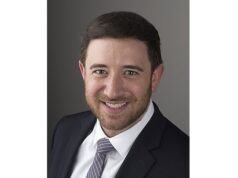 This is the first in a series of articles covering the GEST webinar. For dispatches from the frontlines of the COVID-19 pandemic, and the pertinent takeaways for interventional radiologists, click here.
This is the first in a series of articles covering the GEST webinar. For dispatches from the frontlines of the COVID-19 pandemic, and the pertinent takeaways for interventional radiologists, click here.
Interventional radiologists must play their part in protecting patients and healthcare workers during the coronavirus pandemic, urge physicians fighting the COVID-19 outbreak in Singapore. Speaking in a webinar hosted by GEST (Global Embolization Oncology Symposium Technologies) on 25 March, Kiang Hiong Tay (Singapore General Hospital, Singapore) told the over 500 virtual attendees: “COVID-19 has exploded around the world. It took 67 days to reach the first 100,000 patients, but the last 100,000 were diagnosed in just the last two days. Europe is now the epicentre. In Italy and Spain, the death toll has exceeded that of China, and I think very soon, the USA will be the next epicentre for the epidemic.”
Singapore is no stranger to viral outbreaks. The 2003 epidemic of severe acute respiratory syndrome (SARS) had a disproportionately high mortality rate in the country compared to the worldwide average, with 14% of the 238 cases proving fatal. Recalling this experience, Tay said he believe it has led to the healthcare service in Singapore being relatively well-prepared for the current eruption in coronavirus cases, commenting: “For many years after SARS, our country has been slowly building up capacity to address big outbreaks such as this.”
He said that “the key principle is to try and prevent hospital transmission: you want to prevent cross transmission between different groups of people, and the way to do this is strict adherence to infection prevention measures. Social distance is another important strategy, especially in preventing healthcare [worker] to healthcare [worker] transmission.”
The crucial takeaways from his experience preventing viral transmission in Singapore that Tay wishes to impress on the international physician community are summarised below:
Protect patients
- Segregate inpatients and outpatients. Singapore General Hospital are able to do this physically, with an upstairs/ downstairs divide between the two groups, but Tay advised that if this is not possible due to space limitations, then a temporal segregation can be implemented. For example, the outpatient list could be seen to in the morning, and inpatients in the afternoon.
- Reduce the number of inpatients in the hospital. Postpone non-urgent elective cases, or do them as day cases where possible. This will free up beds for the COVID-19 surge in patient numbers.
- Implement hospital perimeter control. Anyone with a recent travel history to a country with a COVID-19 outbreak, and anyone showing any symptoms, should be banned from the hospital. Tay also recommended introducing temperature screening for the patients.
Protect staff
- Ensure infection prevention and control knowledge and practices are up to date and consistently practiced. This includes conducting refresher training in hand hygiene and personal protective equipment (PPE) use—proper donning and doffing of PPE. “Do not neglect the non-medical staff,” Tay cautioned, “in SARS, we had many healthcare assistants infected because we did not practice this. Please do not neglect them.”
- PPE should be available. A surgical mask must be worn in all patient areas. PPE type calibrated to risk level—for example, full PPE is essential in Singapore when in contact with confirmed or suspected COVID-19 patients, when performing an interventional radiology (IR) procedure on a patient with pneumonia or acute respiratory symptoms, or when performing an aerosol-generating procedure. When treating patients from the general ward and for seeing outpatients with no risk factors for COVID-19, a surgical mask is adequate. Aerosol-generating procedures pertinent to interventional radiologists include bronchial stenting, gastrointestinal stenting, and naso-gastric or naso-jejunal tube insertions.
- Walkabout and audit. “We have teams who daily walk about the hospital and audit people, ensuring every complies with the infection-control measures.”
- Adequate staffing is “very important”. Tay said all vacation and conference leave must be put on hold. It is necessary to reduce the workload, he commented, as infection prevention measures are time consuming and labour intensive. “Do not rush,” he warned. “That is how mistakes are made.”
- Staff monitoring. In Singapore General Hospital, there is a twice daily temperature check of all staff, and every employee is issued with a personal thermometer. “There is an app that we can submit our temperature to,” he recounted, “and this is to allow the early detection of COVID clusters.”
- Travel restrictions to countries affected by COVID-19.
Prevent cross-transmission
- Minimise transfer of COVID-19.
- Patients suspected of COVID-19 handled the same way as confirmed cases. “This is because, if you do not have appropriate PPE and you become exposed, potentially a large group of people will end up with the infection or in quarantine.”
- Do not come to work if ill.
- Contact tracing is “key”. Any staff at the Singapore General Hospital not wearing appropriate PPE who are exposed to a COVID-19 patient are quarantined for 14 days. The names of staff involved in all interventional radiology (IR) procedures is captured in RIS/PACS (radiology information system/ picture archiving and communication system). Additionally, staff rosters are updated and archived.
- Staff segregation and social distancing. Singapore has prohibited the cross-institution movement of staff. Tay urged webinar attendees to have dedicated interventional radiologists based at satellite sites who can cover calls. This prevents the shutting down of the entire service is staff is infected or if quarantine is necessary, he explained. “We have zoom or Webex lunches, where we eat separately, but are still socially connected,” he said.
Detailed workflow for COVID-19 patients
Chow Wei Too (Singapore General Hospital, Singapore) next talked listeners through the workflow for COVID-19 patients. “The objective is to provide vascular IR care for COVID-19 patients, whether they are suspected or confirmed, while practicing the highest level of infection control.
“We want to be part of the solution, and really not part of the problem,” he said, referencing an article published in Bloomberg where surgeons operating on patients without proper protection or testing was in part responsible for the rising death toll amongst physicians in Italy. He directed listeners to the Singaporean Ministry of Health website, where a 2017 document outlines the national infection prevention and control guidelines for acute healthcare facilities. The World Health Organisation (WHO) also have a document outlining the five “moments” when physicians should wash their hands. “This is also very important,” Too stressed.
Like Tay, Too mentioned the importance of minimising the movement of patients. Physicians seeing their patients at the bedside “is best”, he said, and if this is not possible, “we go to a designated operating theatre, which we share with other procedures, where we are guided by a C-arm, and for procedures like stroke [thrombectomy] or other things that involve CT scanning, we go to the IR centre”.
Bedside procedure
“For all of our procedures, we put up charts of who is involved, and we label them [extensively], so every staff member knows what to do,” Tay informed his listeners. He showcased an example of a procedure sheet, which included columns for staff members’ initials, the staff needed (for example controller and scrub nurse), the role they would play (for example “maintains command and control of the entire event and to coordinate with various external parties” and “scrubs for procedure”), the attire necessary (such as “N95/ eye protection” or “Full PPE”), and any additional remarks (such as “Walkie Talkie in breast pocket” or “Stays at corridor”). Staff are also given a schematic diagram of the procedure, for clarity.
Between the corridor and the isolation room or intensive care unit, where the patient is, there is an anteroom or air-locked lobby, which provides a barrier against loss of pressurisation, and allows for the transfer of equipment and staff, as well as the removal of PPE.
The workflow is as follows:
- Circulating nurse goes in first and checks and briefs the patient
- Circulating nurse communicates with controller via walkie talkie
- Scrub nurse enters and prepares the trolley
- All equipment wrapped so it is easier to clean
- Circulating nurse and radiographer position the patient
- Scrub nurse cleans and drapes the patient
- Interventional radiologist goes into the room and perform the procedure
- Procedure team exits room
- Waste is disposed on in the anteroom—unused items bought into the room are also disposed of
- Remove N95 in corridor and every staff member involved has a shower
- Contact tracing form filled out
Interventional radiology suite procedure
Tay talks through a stroke thrombectomy procedure at the Singapore General Hospital for a suspected COVID-19 patient.
“The staffing here is a lot more elaborate,” he recounted. “We want separation of the procedural and the support teams. Reduce multi-tasking and assign clear roles for individuals. Very important here is the role of the controller. We found that with the creation of this role, of a controller, everyone is much calmer and much happier.”
The second floor of Singapore General Hospital, which is the IR centre, has been divided into seven suites operating across two levels. The hospital has set up a specific PPE removal and donning area, and has a clear traffic control policy in its corridors. A traffic nurse is in charge of directing people between rooms.
Share your story
If you have been affected or have any information, we’d like to hear from you. You can get in touch by emailing the editor at [email protected] and one of our journalists may contact you to discuss further.










